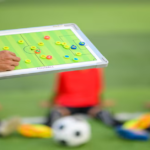Pickleball, the rapidly growing sport that blends elements of tennis, badminton, and ping-pong, has captured the interest of millions worldwide. As the sport continues to gain traction, the competitive side of pickleball is also flourishing. Whether you’re a seasoned player or a beginner, understanding how pickleball tournaments are structured, particularly the concept of pickleball brackets, is essential to success on the court.
This article serves as a comprehensive guide to pickleball brackets, covering their purpose, types, scoring systems, and strategies for excelling. We will also explore how technology has enhanced the way tournaments are organized and provide insights into preparing for competitive play.
What Are Pickleball Brackets and Why Do They Matter?
Pickleball brackets are an essential part of competitive play in tournaments. A bracket is a predefined system used to organize players and teams into structured matches. The purpose of brackets is to ensure a fair, systematic progression through the tournament, culminating in a champion or ranking order.
Brackets matter because they determine the matchups, influence the flow of the tournament, and create clear paths toward the finals. Properly designed brackets help ensure competitive balance and provide opportunities for players of different skill levels to showcase their abilities.
Types of Pickleball Brackets
There are several types of brackets used in pickleball tournaments, each serving different purposes based on the size and competitiveness of the event. Here’s an overview of the most commonly used bracket formats:
1. Single-Elimination Brackets
This is one of the simplest and most straightforward formats, where players or teams are eliminated after losing a match.
- How It Works: Players compete in a knockout format, and the winner of each match advances to the next round.
- Advantages: Quick and efficient, ideal for tournaments with a large number of participants and limited time.
- Drawbacks: Once a player loses, they are out of the tournament, which may be discouraging for some players.
2. Double-Elimination Brackets
In a double-elimination format, players or teams must lose twice before being eliminated from the tournament. There are typically two brackets: the winner’s bracket and the loser’s bracket.
- How It Works: Players start in the winner’s bracket. If they lose, they drop into the loser’s bracket for a second chance to stay in the competition. The winners of both brackets face off in the finals.
- Advantages: Offers players a second chance, making it a fairer system compared to single-elimination formats.
- Drawbacks: Requires more time and matches, which may be challenging for organizers.
3. Round-Robin Brackets
A round-robin format involves every player or team competing against all others in their group or pool. Points are awarded for each match, and the top performers move on to the next stage or win the event.
- How It Works: Participants are divided into groups, and matches are scheduled so that each participant plays every other participant in their group.
- Advantages: Guarantees that each player plays multiple matches, making it suitable for social or developmental tournaments.
- Drawbacks: Can be time-consuming, especially with large groups.
4. Pool Play with Elimination Brackets
A hybrid of round-robin and elimination formats, this type involves players or teams competing in pool play before advancing to a single- or double-elimination bracket.
- How It Works: Players are first grouped into pools for round-robin play. The top performers from each pool then advance to the elimination stage.
- Advantages: Balances guaranteed matches and competitive knockout rounds.
- Drawbacks: Requires careful scheduling and can be time-intensive.
Scoring Systems Used in Pickleball Brackets
Understanding the scoring system in pickleball tournaments is crucial to planning your strategy and managing the flow of matches. The two main scoring systems used in tournaments are:
1. Traditional Scoring (11-Point Game)
- Structure: Matches are typically played to 11 points, and players must win by at least 2 points.
- Scoring: Only the serving team can score points. If the serving team loses the rally, the serve switches to the opposing team.
- Application: Commonly used in both casual and competitive play.
2. Rally Scoring (Point Per Rally)
- Structure: A point is awarded at the end of every rally, regardless of which team served.
- Scoring: Rally scoring speeds up games and is sometimes used in events with time constraints.
- Application: Ideal for larger tournaments or events where match duration needs to be controlled.
Strategic Considerations When Competing in Pickleball Brackets
Success in pickleball tournaments requires more than just skill with the paddle; understanding how to navigate bracket play strategically can give you an edge. Here are some key strategies to consider:
1. Manage Your Energy
Tournaments, especially those with multiple rounds or double-elimination formats, can be physically and mentally demanding. Managing your energy throughout the day is critical to maintaining peak performance.
- Tips:
- Stay hydrated and fuel your body with the right nutrition.
- Take advantage of breaks to rest and stretch.
- Conserve energy in early matches without compromising performance.
2. Adapt to Opponents’ Playing Styles
As you advance through the brackets, you’ll encounter opponents with varying playing styles, strengths, and weaknesses. Being able to adapt quickly is a valuable skill.
- Tips:
- Study your opponents during warm-ups or early matches.
- Adjust your strategy based on their strengths (e.g., if they excel in net play, consider baseline rallies).
- Identify weaknesses, such as difficulty with lobs or backhand shots, and exploit them.
3. Mental Toughness
Pickleball tournaments often test your mental resilience. Setbacks, losses, and pressure situations are common, but players who stay calm and focused typically perform better.
- Tips:
- Practice mindfulness techniques such as deep breathing to maintain composure.
- Develop a “reset routine” to regain focus after mistakes.
- Avoid overanalyzing losses; instead, learn from them and move forward.
4. Partner Communication
In doubles tournaments, effective communication between partners can make or break your success.
- Tips:
- Establish clear roles before matches begin (e.g., who will cover certain shots).
- Communicate regularly during the match using verbal cues or signals.
- Encourage each other, especially after mistakes or challenging rallies.
Technology and Pickleball Bracket Management
With the growth of pickleball, tournament organizers now have access to digital tools and apps that simplify bracket management and enhance the overall tournament experience. Popular platforms include:
- PickleballTournaments.com: A widely used site for scheduling, registration, and bracket tracking.
- Pickleball Brackets App: Allows players to view match schedules, results, and rankings in real time.
- Court Reserve: Manages court bookings, player rosters, and match notifications.
These tools help streamline the process, reduce human error, and provide players with instant access to updates, making tournaments more efficient and enjoyable.
How to Prepare for Pickleball Tournaments
Proper preparation is key to excelling in any tournament setting. Here’s a checklist to help you get ready:
- Conditioning and Training:
Build your stamina, agility, and strength through regular exercise and practice. - Paddle Selection:
Choose a paddle that suits your playing style, whether you prioritize control, power, or balance. - Study the Tournament Format:
Familiarize yourself with the bracket type, scoring system, and rules to avoid surprises. - Gear and Accessories:
Pack essentials such as extra paddles, grip tape, water, snacks, and a first-aid kit. - Mental Preparation:
Set realistic goals and develop a positive mindset to handle both victories and defeats.
Conclusion
Pickleball brackets are the backbone of organized tournaments, providing structure and ensuring fair competition. Understanding the various types of brackets, scoring systems, and strategic approaches can help players maximize their performance and enjoyment of the game. As pickleball continues to grow, embracing technology and effective preparation will be essential for players and organizers alike.
Whether you’re aiming for a recreational tournament or a competitive event, mastering the intricacies of pickleball brackets will enhance your experience and improve your chances of success on the court.
FAQs
1. What is the most common bracket format in pickleball tournaments?
The double-elimination bracket is one of the most common formats in pickleball tournaments, offering players a second chance after a loss.
2. Can beginners compete in tournaments with advanced players?
Most tournaments categorize players based on skill levels, ensuring fair competition. Beginners typically compete against players of similar skill.
3. How do I find upcoming pickleball tournaments?
You can find tournaments through online platforms like PickleballTournaments.com, local pickleball clubs, and social media groups.
4. What should I bring to a pickleball tournament?
Essentials include paddles, comfortable clothing, water, snacks, extra shoes, grip tape, and a positive attitude.
5. How long do pickleball tournaments typically last?
Tournaments can vary in length depending on the format and size, but most local events last a day or weekend.
6. What are the benefits of playing in round-robin brackets?
Round-robin brackets guarantee multiple matches for all participants, allowing players to gain experience and improve their skills.







